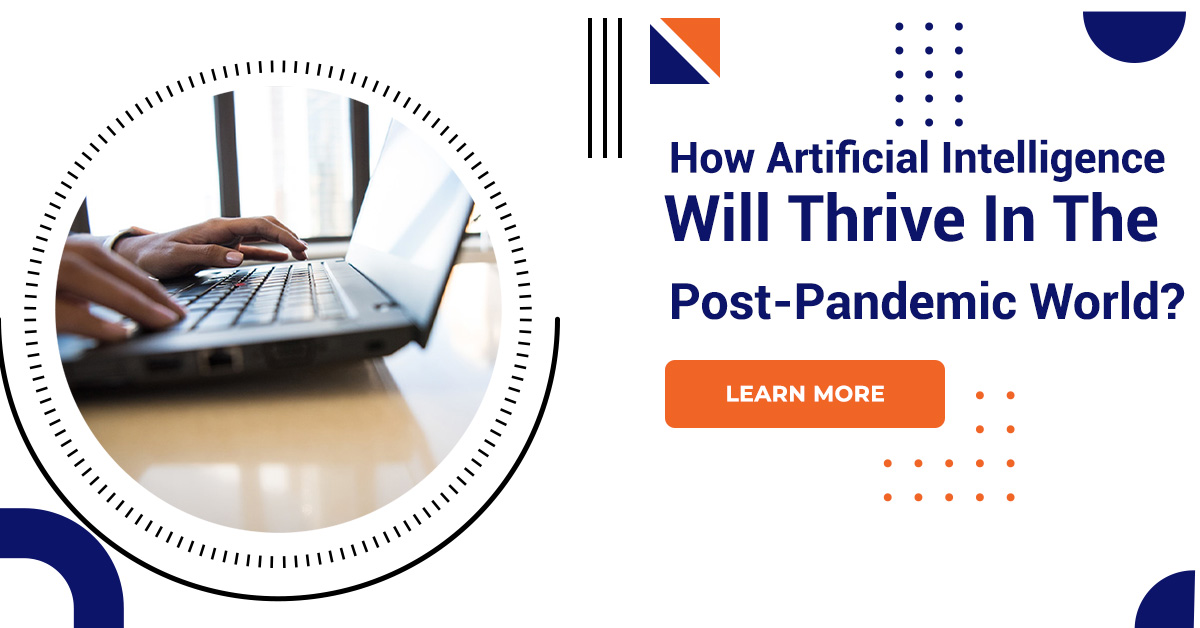How Artificial Intelligence Will Thrive In The Post-Pandemic World?
Artificial intelligence in the wake of the unprecedented global pandemic, the world has witnessed a profound transformation in the way we live, work, and interact with technology. As we navigate the complex landscape of a post-pandemic world, one thing becomes abundantly clear (AI) is poised to not only survive but thrive in this new era. The pandemic served as a catalyst, accelerating the adoption and integration of AI across various sectors, from healthcare and education to remote work and customer service.
Post-pandemic world
Robotics
A wide range of industries have adopted or expanded robotics because human error is eliminated in use worldwide to increase by 38% this year and to continue this growth over the next two years. The spread of the virus has accelerated the use of robotics and other technologies to perform tasks that are more demanding during a pandemic. Security is optimized, productivity increases, dependencies are eliminated, workflows are streamlined, and revenues grow.

Automation
In addition to robotics, automation has seen the rise of businesses and industries that have had to adapt to remote work. From managing our schedules in Slack, Google Calendar or Stocky to filtering emails to solving IT problems without physical support, automation is becoming essential to keeping our workforce productive and our companies running. It also works in the background to manage many support functions such as back-end databases and information security functions that you don’t see but are essential to the day-to-day running of the business.
Chatbots
Smart brands are having fun with it, and consumers are enjoying the results. Brand experience firm Uber all found that eight out of 10 consumers who engaged with a chatbot found it to be a positive customer experience. The World Health Organization and the Centers for Disease Control and Prevention have also put chatbots on their websites to provide up to -data billions with information about the spread of disease and its symptoms.

Virtual assistants
Virtual assistants respond to commands, provide us with information, provide entertainment and help us with everyday tasks. About 4.2 billion virtual assistants are currently in use. The boom in virtual assistants is based on the use of natural language processing in voice recognition. NLP is the ability of automated products to understand common everyday speech.

Surveillance systems
In further efforts to ensure we all stay safe and minimize exposure to germs, governments, hospitals and businesses have increased the use of artificial intelligence technologies. Surveillance cameras, facial recognition systems and GPS locators for smart devices are now actively fighting the spread of COVID-19 by helping with tracking and tracing protocols.
Communication and education
Face-to-face meetings have been strictly limited since the outbreak of the pandemic. A new way of gathering. AI-powered seminars, conferences and meetings will continue long after COVID-19 is no longer a threat. Zoom, Microsoft Teams, Skype and all the other video conferencing platforms that only require Wi-Fi show us that we can easily communicate from the comfort of our homes.
Conclusion
As businesses see huge cost savings and a smaller carbon footprint, a healthy balance of remote and on-site work seems to be the future. Educational institutions have also embraced this new approach, with universities automating administration and introducing online learning that can cover entire degrees without stepping into a single classroom.







